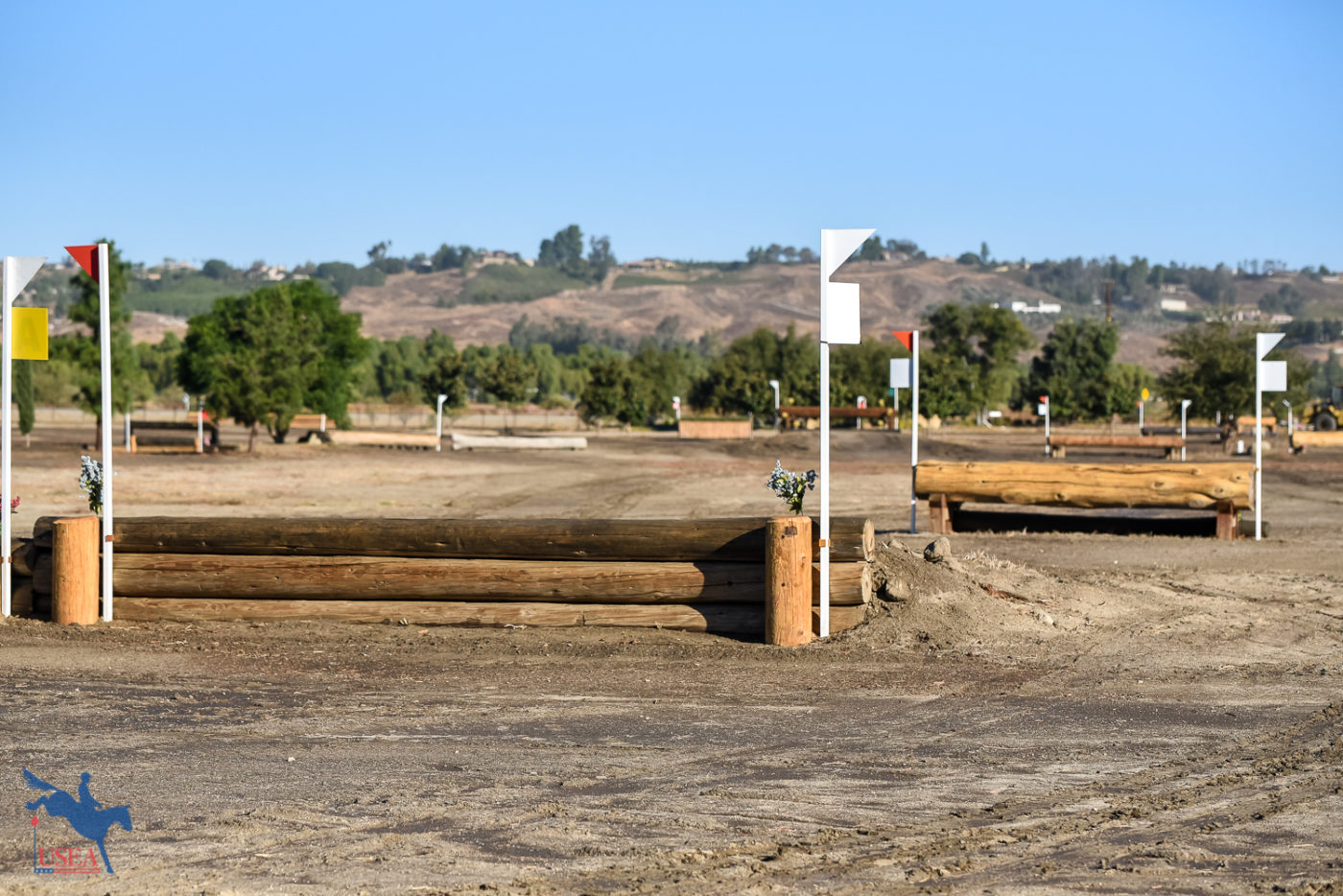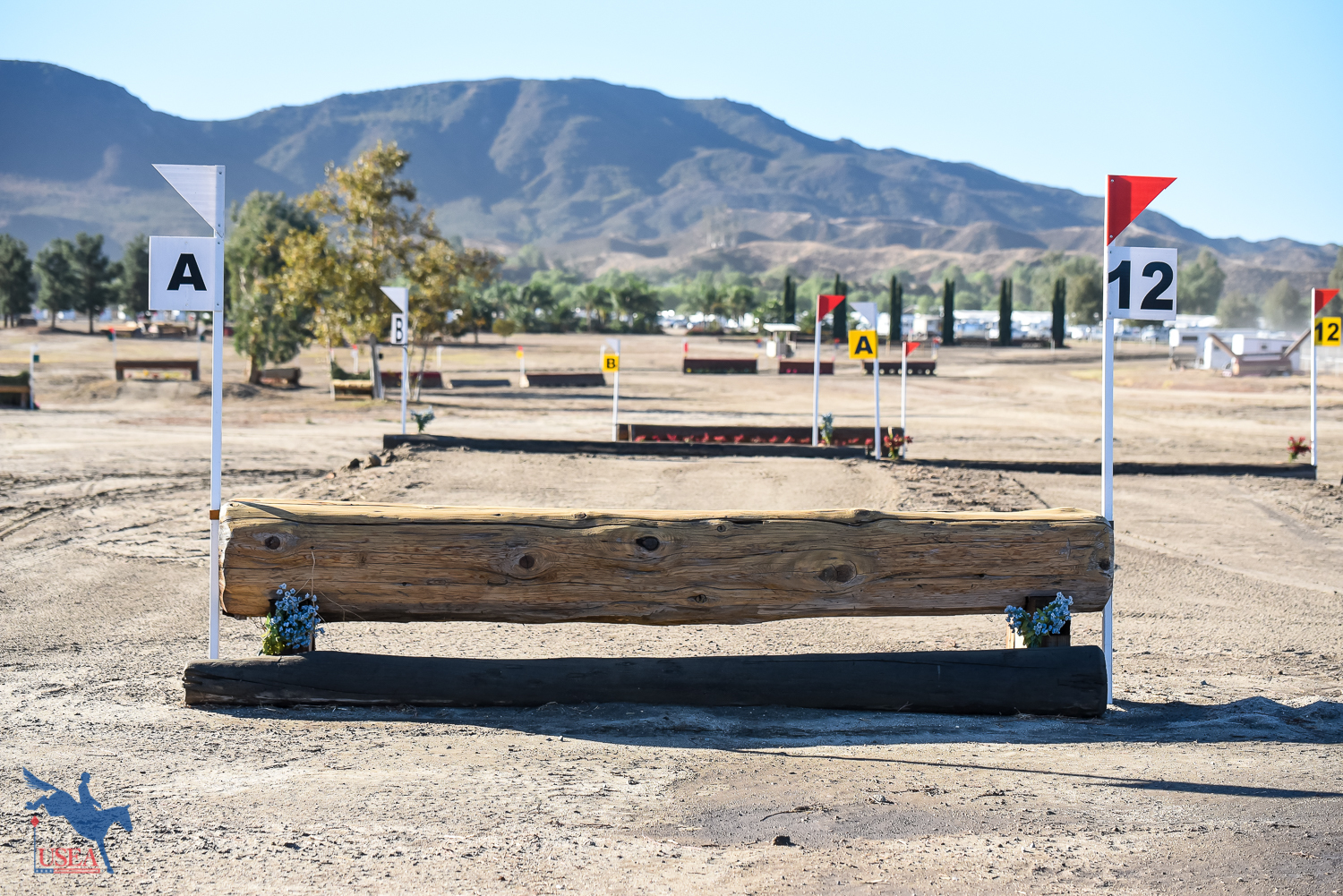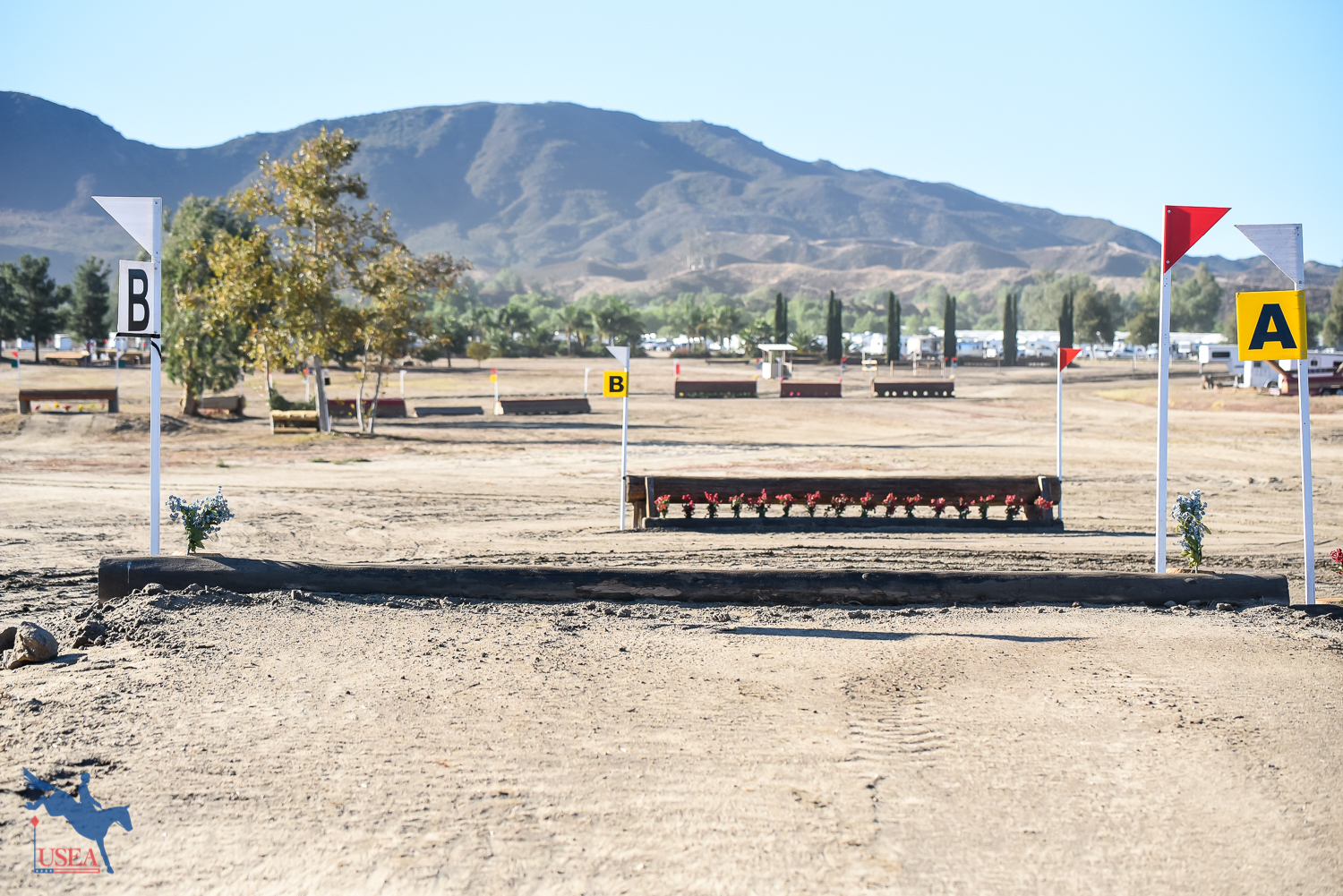Renew Your USEA Membership for the 2023 Season Today LEARN MORE

Ever wonder what the pros see when they're out walking cross-country? In the Ride Between the Flags series, riders walk us through their approach to tackling different cross-country questions. International rider and trainer Deborah Rosen talks us through fence 12AB of the Galway Downs Novice cross-country course.
The Galway Downs International Event is taking place this weekend in Temecula, California, hosting international CCI2*-L, CCI3*-L, and CCI4*-L divisions, a Hylofit USEA Classic Series Training Three-Day division, and Beginner Novice through Intermediate horse trials. California-based rider and trainer Deborah Rosen explained how to ride fence 12AB of the Novice cross-country course, a log to a downbank.
“I really love this combination,” Rosen began, “because, ridden slightly differently, it’s a great question for a young horse the way it’s designed, but it can also be ridden with a bit more sophistication if you’re looking to move your horse up to Training level.”
“I like that the 'A' log is impressive so horses are not going to be invited to run over the top of it, which you would not want to have with the bank on the landing side,” she continued. “The next thing I like to see is that there is enough distance from the log to the bank for you to organize your balance and your focus, especially if you’re on a young horse.”

Riders have a long approach to the log at 12A, so Rosen said it’s important to make sure you have your canter in order for the jump. “I’m going to compress my canter to just a notch above show jumping for this, and I’m going to do it with enough time so that my horse can look and process, even if he doesn’t really understand what’s coming up. He can look and process that there are a couple of things going on and he can start to have a plan.”
“I believe the log will impress him just enough that I can press him to the log a little bit, which is another reason why I think this is a good question,” she went on. “If we can press at the log, then they’re going to land and we’re going to balance them and then we can press again at the downbank.”
Riders will land from the log at 12A and canter four strides to the downbank at 12B. Or, Rosen said, they might choose to trot to allow the horse more time to process the downbank. “There’s enough time as we land to, even on a young horse, invite them to come back to trot, which I might want to do – let him come back to trot, see the bank, and step off the bank.”

There is a Beginner Novice fence in the field of vision on the landing from the bank, and Rosen asserted the importance of using your eyes to guide your horse in the right direction. “I’m going to want to really use my eye control as we’re stepping off the bank so my horse knows we’re going to the left. Then I want to make sure that I canter away, not speedily, but so they don’t get sort of stuck in the landing at the base and land flatfooted. I’m going to close my leg and ride away from the bank in a smooth and confident way.”
Helpful Links
Follow the USEA event coverage on social media!
Facebook | Instagram | Twitter